Progressive Web Apps – Exploring the New Trend In Mobile App Development

Author : TechAffinity 19th Dec 2022
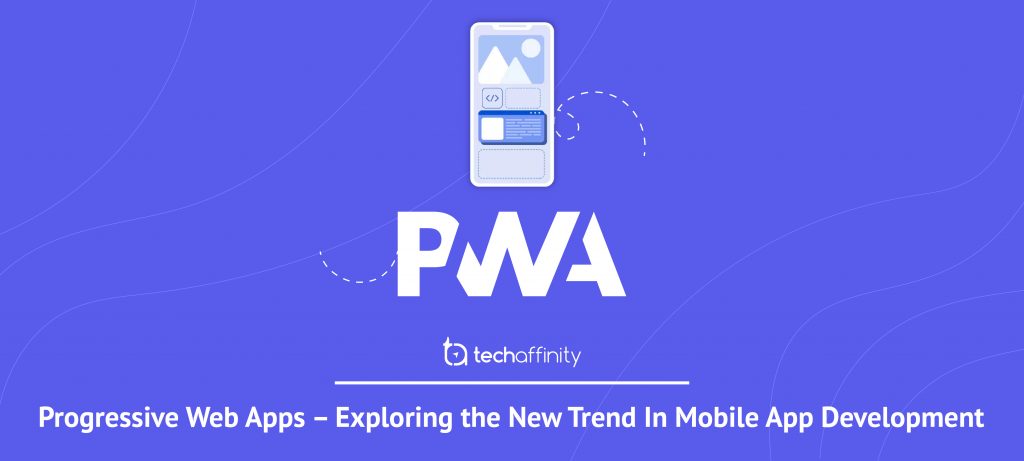
With the arrival of smartphones, businesses saw a new opportunity to engage with their customers in an interactive way by developing apps. Apps became popular because they allowed the users to interact with the businesses from anywhere, anytime, using any device.
However, with the passage of time, apps became less engaging and businesses started losing customers rapidly. This led to customer retention rates declining for the businesses and revenues dropping alarmingly for the respective brands.
To overcome this situation, businesses started to switch to what is now popularly known as Progressive Web Apps (PWAs). So, in this blog let’s try to explore and understand PWAs – the latest trend in mobile application development.
What is a Progressive Web App?
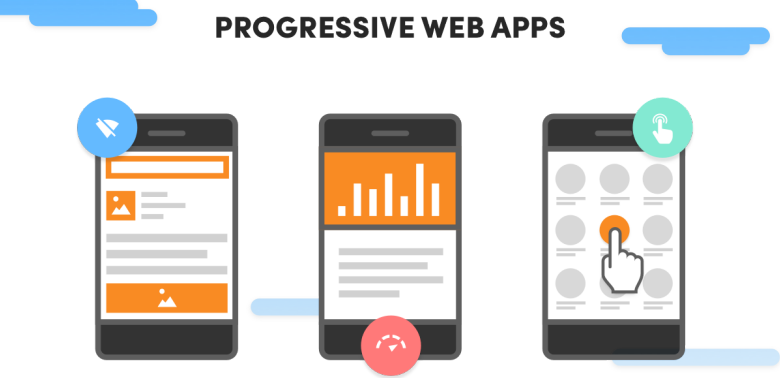
A progressive web app is a website that is meant to give the look and feel of a native mobile app. It runs in the web browser, and is developed using a single codebase and ensures cross-platform interoperability. One key feature of PWA is that the user need not download it from the Google play store or iOS app store.
PWAs are websites which leverage the latest web technologies to provide a seamless, fast, reliable and engaging user experience. They eliminate a host of issues like network connectivity, data limitations, device storage capacity and lack of connectivity. Progressive web app combines the look, feel and use of an app with the ease of coding of a website.
Few examples of progressive web applications are Twitter, FlipBoard, Gmail, Google Docs. We can login to these applications using the web browser of our smartphones without having to download them from app stores. All these give us an app-like experience and unlike the native apps, we can login to them from anytime, anywhere and using any device. This is the key reason behind the massive surge in popularity of these apps.
Google has listed the following as prerequisites for a PWA:
- The data retrieval needs to be through the HTTPS protocol.
- Website to be made responsive.
- Display at least the homepage in offline mode.
- Ability to add the icon to the main screen of the smartphone.
- Browser compatibility across web browsers (Chrome, Firefox, Safari, Edge)
- Easy content sharing with separate URL for each subpage.
PWA vs Native Apps
Native apps are developed for a particular operating system like Android or iOS. Developers are required to use specific languages like Swift to be able to code these apps for their native platforms. Developers are restricted and need to give up on cross-platform development tools like React native. Once the app is built, it has to be submitted to the Google play store or iOS app store to ensure the app meets the standards of the respective platform. This process can take months to finish.
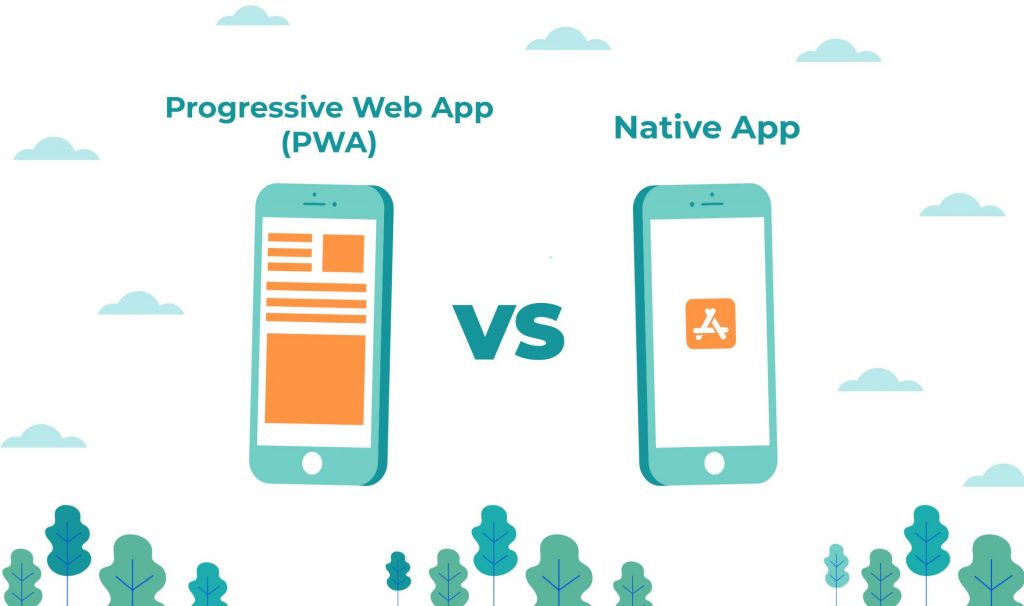
In the case of PWA, there are no such problems as progressive web apps are an extension of websites with newer features that ensure an app-like experience. Also, the developers need not worry about app store permissions.
So, when deciding between PWAs and native apps, go for PWAs if there are a limited number of developers to develop cross-platform apps for iOS and Android and if the project requires open access from a single URL. Native apps are best when there are enough developers and the project requires a native-app experience.
Why Should We Use Progressive Web Apps?
One of the major reasons why users prefer apps over web applications is the enhanced user experience. However, developing and maintaining such apps takes a lot of time and effort apart from the higher overhead expenses. If the users are on different platforms, the app needs to be developed separately for each platform.
However, with PWAs, the app does not need to be developed separately for each platform. It can be built using a common codebase since PWA is based on the philosophy of “code once and use everywhere.” Once the app is built, we can use it across web browsers, web apps, on mobile devices and even on desktops.
As a result, with PWA we often get improved retention rates, better performance, and quality user experience for an application at affordable prices.
How do Progressive Web Apps Work?
The minimum technical requirements outlined by Google are as follows:
Service Worker
In a progressive web, service worker is a piece of JavaScript code that runs in the background. Its primary function is to precache the page resources so that webpage loads fast and sometimes can even be used for offline functionality. When a user visits the website for the first time, the service worker caches the critical assets like the HTML files and images so that it does not need to make API calls to the backend as frequently, the next time a user visits the website. Though this is the primary task of the service worker, it can also serve other purposes like push notifications and background data synchronization.
Web Manifest
The web manifest is a JSON file that determines the look and feel of the app during installation. It is used to customize the look of the home screen icon and how the web app is launched. In general, it includes metadata like app name, version, description etc.. In short, it is essential for creating the native app-like experience.
Transport Security Layer (TLS)
Progressive web apps communicate over HTTPS using SSL certificates installed on the web server. The certificate creates a secure, encrypted connection between the frontend app and backend server. Using TLS protocol, secure data transfer is ensured when the web app interacts with backend systems. This is essential to ensure privacy and security of user information and critical for handling customer credit card information for eCommerce stores.
When Should We Choose Progressive Web Apps?
Progressive web apps do not require a separate codebase for different mobile platforms like Android and iOS. Hence, the updates for these apps are very simple. PWAs are free from the verification process of the platforms and users need not download updates from the respective app stores. The entire process is a server-side operation and the user will receive the latest version of the application at the next launch.With that being said, PWAs have restrictions with access to the advanced features of the mobile phone and data.
Hence, PWAs are best when services require frequent changes, are less frequently used, and those that don’t use the advanced features of the mobile phone.
Consider using the apps in the following scenario:
- Not enough budget for a full-fledged app.
- Need to get to the market fast.
- SEO is critical.
- Cross-platform compatibility is a priority for the business.
- Need the app to reach a wider audience.
Successful Change of Mobile Site to PWAs in Different Industries
ECommerce
In the case of online stores, improvements in user experience in terms of usability and speed has a positive impact on the conversion rate. For a mobile site, this performance is much lower when compared to PWA. Alibaba realized this advantage and introduced their PWA. As a result, its conversion rate went up by 76%. Also with the launch of the PWA, its active users increased by 14% on iOS and 30% on Android.
Media
For news portals, they have no use for the advanced features of the mobile phones. The users are interested in quick access to the best content and a great user experience. By introducing its PWA, the Washington Post improved its content loading by 88% when compared to its traditional mobile site. Forbes also introduced a new ad format for faster loading in mobile devices and reduced their loading time from 3-12 seconds to 0.8 seconds with their PWA.
Marketplace
Services such as hotel booking, flight booking, food delivery are benefiting with the launch of PWAs. These gain since we do not use them frequently and so there is no need to download an application for each of these activities. For example, the PWA of Wego – a service for booking cheap hotels and flights, reduced its full page load time from 12 seconds to 1.6 seconds. Hence, the bounce rate reduced by 20% and conversion increased by 95%.
5 Reasons to Use Progressive Web Apps
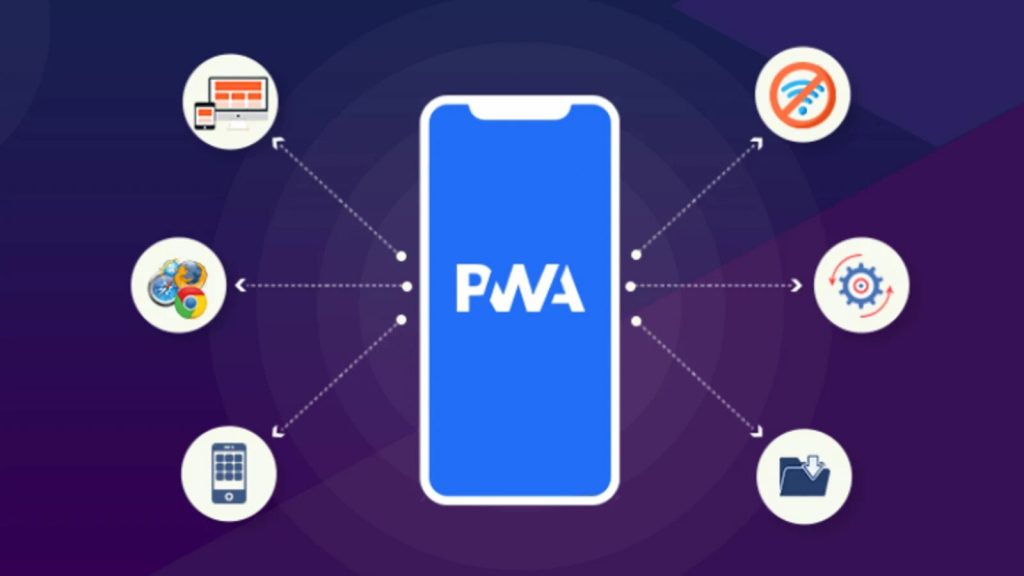
Increase Speed and Reliability
PWAs offer fast loading times since it uses service workers for caching and there is no heavy coding like in the case of native apps. Since faster load times can be the difference between a conversion and drop, PWAs are used since they offer better speeds and performance essential for users to engage better with the business.
Since progressive web apps are network-independent and platform agnostic, they are generally more reliable when compared to native apps and traditional websites. With respect to design, these apps have few things that could go wrong resulting in improved reliability and performance.
Reduce Bounce Rates
One of the main reasons websites have high bounce rates is due to slow websites or apps. Users neither have the time or patience to wait for slow load times. This is another reason to use progressive web apps.
PWAs help in reducing bounce rates because they offer a fast, improved and seamless user experience. For example, Superbalist decreased their bounce rate by a remarkable 21% by launching their progressive web app.
Optimize for SEO
To increase the visibility of the website using SEO across the SERP, the best option is to leverage the benefits of progressive web apps. Native apps have the disadvantage of being hosted on mobile devices and are hence not discoverable online. This is not the case with PWAs since they are essentially websites and are seen by search engines.
With that said, PWAs have a few more advantages over native apps other than discoverability. These include being indexable, fast, linkable and being developed with a superior UX in mind. In a nutshell, progressive web app might be the solution for optimizing SEO while giving the users a native app-like experience.
Focus on Mobile Users
Progressive web apps will be really useful for any industry that relies heavily on mobile traffic. For example, major devices drive about 65% of all eCommerce traffic. Since the app does not have to be downloaded, it could result in better retention and engagement rates.
Though PWAs might work on any device, it is observed that they are most useful on mobile devices. Mobile devices have less ability to load heavy apps or large websites, resulting in slow low times and poor UX. Here, PWAs solve the problem by offering the same experience without demanding the device’s resources.
Improve Client Retention
With more than 3 million apps on the Google play store, the app market continues to grow rapidly. But, for most of the apps that are downloaded, only 25% of the users continue to use them after the day of download. This app abandonment means there is a huge waste in time for developers and money for businesses which are sponsoring their development.
PWAs can help fix this situation to some extent. Here are a few reasons why progressive web apps help improve client retention.
- Easy Onboarding – Simply add the progressive web app to the home screen without any registration.
- No Download Required – There is no need to download the app since there is no worry about storage space of the device.
- Push notifications – To inform the users of the app with the latest updates, just like native apps.
Limitations of Progressive Web Apps
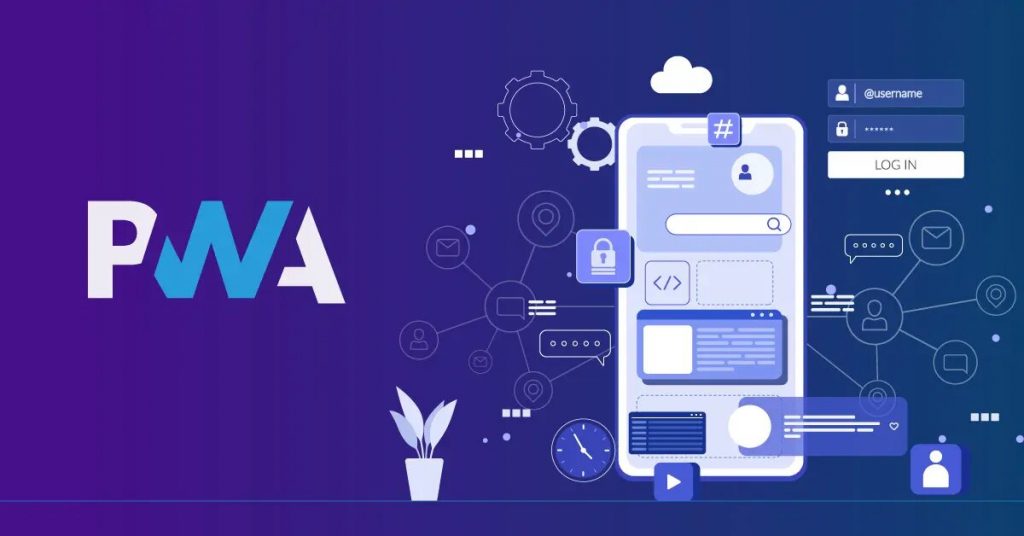
Restrictions on Advanced Features
Unlike the native apps, progressive web apps have restricted access to the advanced features to fully replace the native applications such as NFC or Bluetooth communication modules. Hence, they are not used in the Internet of Things, or software that integrates with devices like smartwatches.
Limited access to Customer Data
Unlike native apps, which have access to data of the customer such as phone number, contact books, calendar, progressive web apps do not have such access to these features. The user needs to agree to allow access in case of native apps. However, this access is not normally acquired in PWAs. This is a critical factor when deciding between native apps and progressive web apps.
Final Thoughts
Progressive web apps are the future of web on mobile devices. Due to its speed, engagement, reliability and ease of development, it is definitely a wise choice to consider developing progressive web apps for your mobile sites. We have also seen how many companies have adopted this strategy to gain profitable results for their businesses and positive outcomes for their customers. With its easy installation, PWAs are sure to attract more users who were earlier unwilling to download native applications.
Though it has its limitations and shortcomings, if your end goal is to deliver a good look and feel to the user combined with quality user experience and the app has high content consumption via web or mobile, progressive web apps should cater to your requirements.
Curious on how your business can benefit from implementing PWA? Drop us a line to media@techaffinity.com or get in touch by scheduling a meeting with our developers.